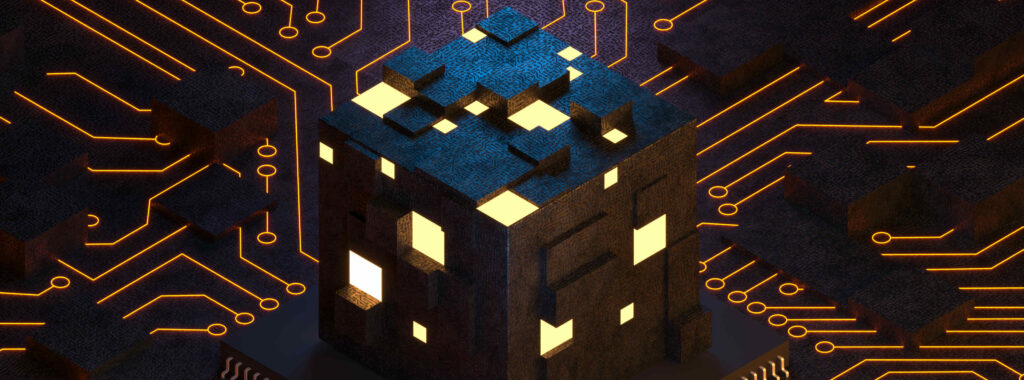In recent years, blockchain technology has emerged as a groundbreaking innovation that is reshaping various industries, from finance to healthcare and beyond. Often associated with cryptocurrencies like Bitcoin and Ethereum, blockchain is much more than a medium for digital currencies. It is a decentralized ledger technology that offers unparalleled transparency, security, and efficiency, promising to transform how data is stored, shared, and verified.
This article delves into the intricacies of blockchain, its key features, how it works, and its wide-ranging applications. By the end of this guide, you’ll have a comprehensive understanding of why blockchain is considered the foundation of the next digital revolution.
What is Blockchain?
At its core, blockchain is a distributed ledger technology (DLT) that records transactions in a decentralized, transparent, and secure manner. Unlike traditional databases, which rely on a centralized server, blockchain operates across a network of computers (referred to as nodes) that validate and store data. Each piece of data or “block” is linked to the previous one, forming a continuous “chain” of records.
The uniqueness of blockchain lies in its structure:

- Decentralization: There is no single point of control, making it nearly impossible for a central authority to manipulate or alter the data.
- Transparency: Every participant in the network can view the data, ensuring openness and accountability.
- Immutability: Once data is recorded on the blockchain, it cannot be changed or deleted, enhancing trust and reliability.
How Does Blockchain Work?
The blockchain operates through a series of steps that ensure security, transparency, and decentralization.
- Transaction Initiation: A user requests a transaction, which could be transferring digital assets like cryptocurrencies or recording data.
- Verification: This transaction request is broadcasted to the entire network of nodes. These nodes work together to validate the transaction using complex algorithms.
- Block Creation: Once validated, the transaction is bundled with other verified transactions to create a “block.”
- Block Linking: This newly created block is added to the existing blockchain in chronological order. Each block is cryptographically linked to the previous one, ensuring data integrity.
- Transaction Completion: The transaction is complete, and the data is permanently stored in the blockchain.
This process ensures that data is accurate, verifiable, and immune to unauthorized alterations.
Key Features of Blockchain
1. Decentralization
One of the most important aspects of blockchain is decentralization. Unlike traditional systems where a central authority (such as a bank) manages transactions, blockchain operates on a peer-to-peer network. This eliminates the need for intermediaries, reducing costs and inefficiencies. Decentralization also makes the system more resilient to failures and cyberattacks.
2. Security

Blockchain is incredibly secure due to its cryptographic algorithms. Each block in the chain contains a unique hash (a digital fingerprint) of the previous block, making it virtually impossible to tamper with the data. If a hacker tries to alter any part of the chain, they would need to modify every subsequent block, which is computationally unfeasible.
Additionally, most blockchain networks use a consensus mechanism, such as Proof of Work (PoW) or Proof of Stake (PoS), to ensure that only legitimate transactions are recorded.
3. Transparency
Blockchain offers unparalleled transparency because every transaction is recorded on a public ledger that can be viewed by anyone. This feature is particularly beneficial in industries like supply chain management, where visibility and accountability are crucial. In financial systems, blockchain can help eliminate fraud and ensure regulatory compliance.
4. Immutability
. This feature, known as immutability, ensures that the information is permanent and trustworthy. It is particularly useful in areas like auditing, where maintaining an unalterable record of transactions is essential for ensuring data integrity.
5. Efficiency and Speed
Traditional systems, especially in finance and banking, often rely on multiple intermediaries to process transactions, which can take days to complete. Blockchain speeds up this process by eliminating intermediaries and allowing direct peer-to-peer transactions. For example, cross-border payments, which typically take several days, can be settled in minutes or even seconds using blockchain.
Applications of Blockchain
Blockchain technology is not limited to cryptocurrencies. It has far-reaching applications across various sectors, providing enhanced security, transparency, and efficiency.
1. Financial Services
The financial industry was one of the first to embrace blockchain, thanks to the technology’s ability to streamline transactions, reduce fraud, and enhance transparency. Blockchain enables:
- Cross-border payments: Blockchain significantly reduces the time and cost of cross-border transactions by eliminating intermediaries.
- . Once the conditions are met, the contract automatically executes, reducing the need for third-party intermediaries like lawyers or banks.
- Decentralized finance (DeFi): Blockchain enables the creation of decentralized financial products and services, such as lending platforms, exchanges, and insurance, which operate without the need for traditional intermediaries.
2. Supply Chain Management
It allows companies to track products from the point of origin to the end consumer, ensuring that goods are authentic and ethically sourced. For instance, in the food industry, blockchain can help trace the source of contamination during food safety crises, reducing the time and cost of product recalls.
3. Healthcare
In healthcare, blockchain is being used to store and share medical records securely. Patients can have complete control over their data, granting access to healthcare providers as needed. Blockchain also ensures that medical data is accurate, tamper-proof, and accessible across different healthcare systems.
Blockchain can also be used in drug traceability, ensuring that pharmaceuticals are genuine and have not been tampered with during transit. This is particularly important for combating the rise of counterfeit drugs.
4. Voting Systems
Blockchain has the potential to revolutionize the way elections are conducted by providing secure, transparent, and tamper-proof voting systems. Blockchain-based voting platforms could prevent fraud, ensure accurate results, and make it easier for people to vote remotely.
5. Real Estate

Blockchain can simplify the real estate transaction process by creating a secure digital ledger for property titles, contracts, and transactions. This reduces the need for intermediaries like brokers and lawyers, making property transactions faster, more transparent, and less expensive. Blockchain can also help prevent fraud by providing a clear and immutable record of ownership.
Challenges of Blockchain Technology
Despite its many advantages, blockchain is not without challenges. Some of the key obstacles include:
- Scalability: As the size of the blockchain grows, so does the demand for storage and processing power. This can make the network slower and less efficient, especially for large-scale applications.
- Energy Consumption: The Proof of Work (PoW) consensus mechanism used by many blockchain networks (including Bitcoin) is extremely energy-intensive. This has raised concerns about the environmental impact of blockchain technology.
- Regulation: As blockchain technology evolves, governments and regulatory bodies are grappling with how to regulate it. While blockchain offers many benefits, its decentralized nature can make it difficult to enforce laws and prevent illegal activities such as money laundering.
The Future of Blockchain
. As the technology matures, we can expect to see more widespread adoption across industries, particularly in finance, healthcare, and supply chain management. The rise of smart contracts and decentralized applications (dApps) will further drive innovation, enabling new business models and creating opportunities for individuals and companies alike.
In the coming years, blockchain could become the backbone of a new digital economy, providing secure, transparent, and decentralized systems for everything from voting to property transactions. As more organizations recognize the benefits of blockchain, its adoption will only accelerate.
The Ultimate Guide to Cryptocurrency: Everything You Need to Know in 2024